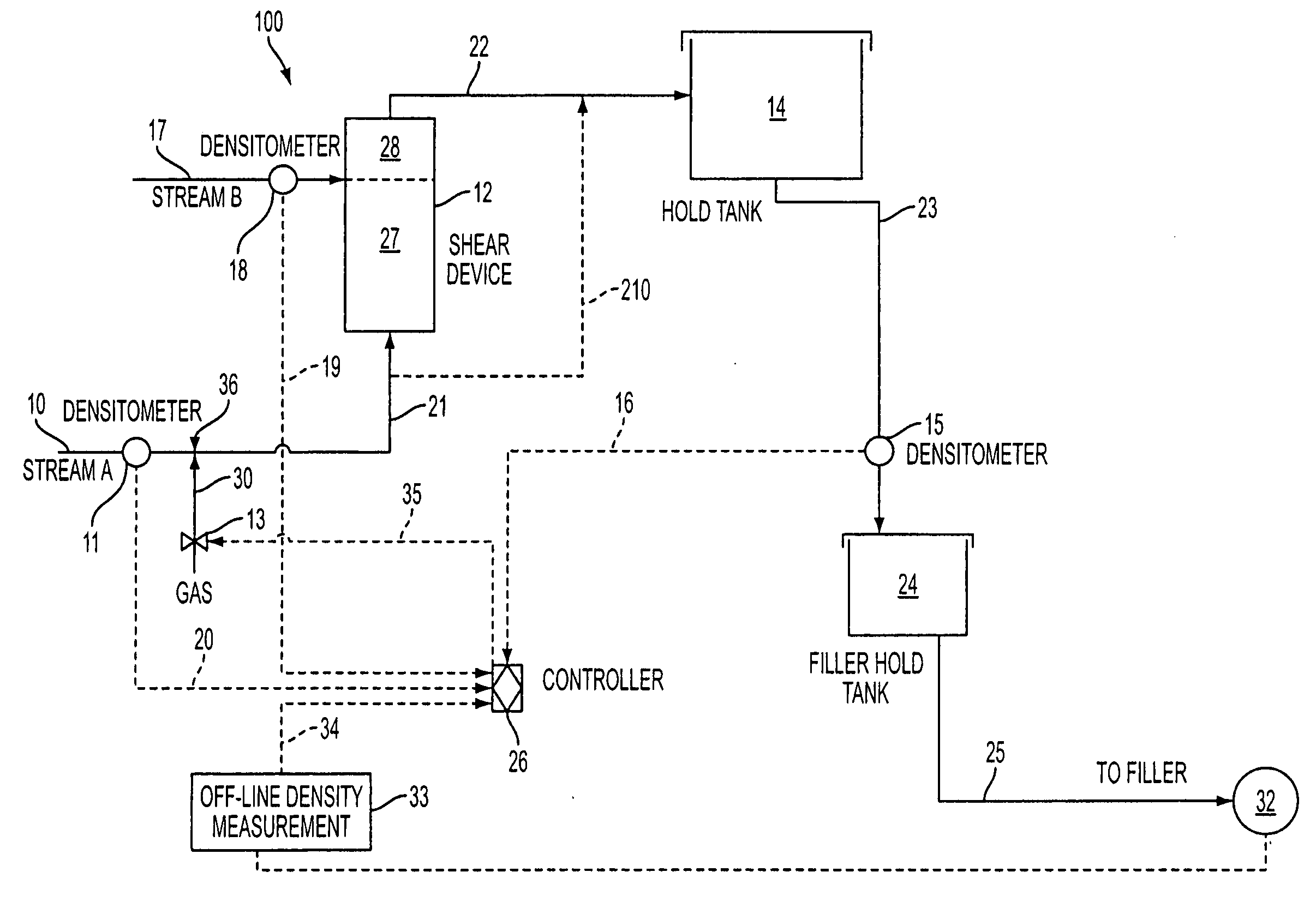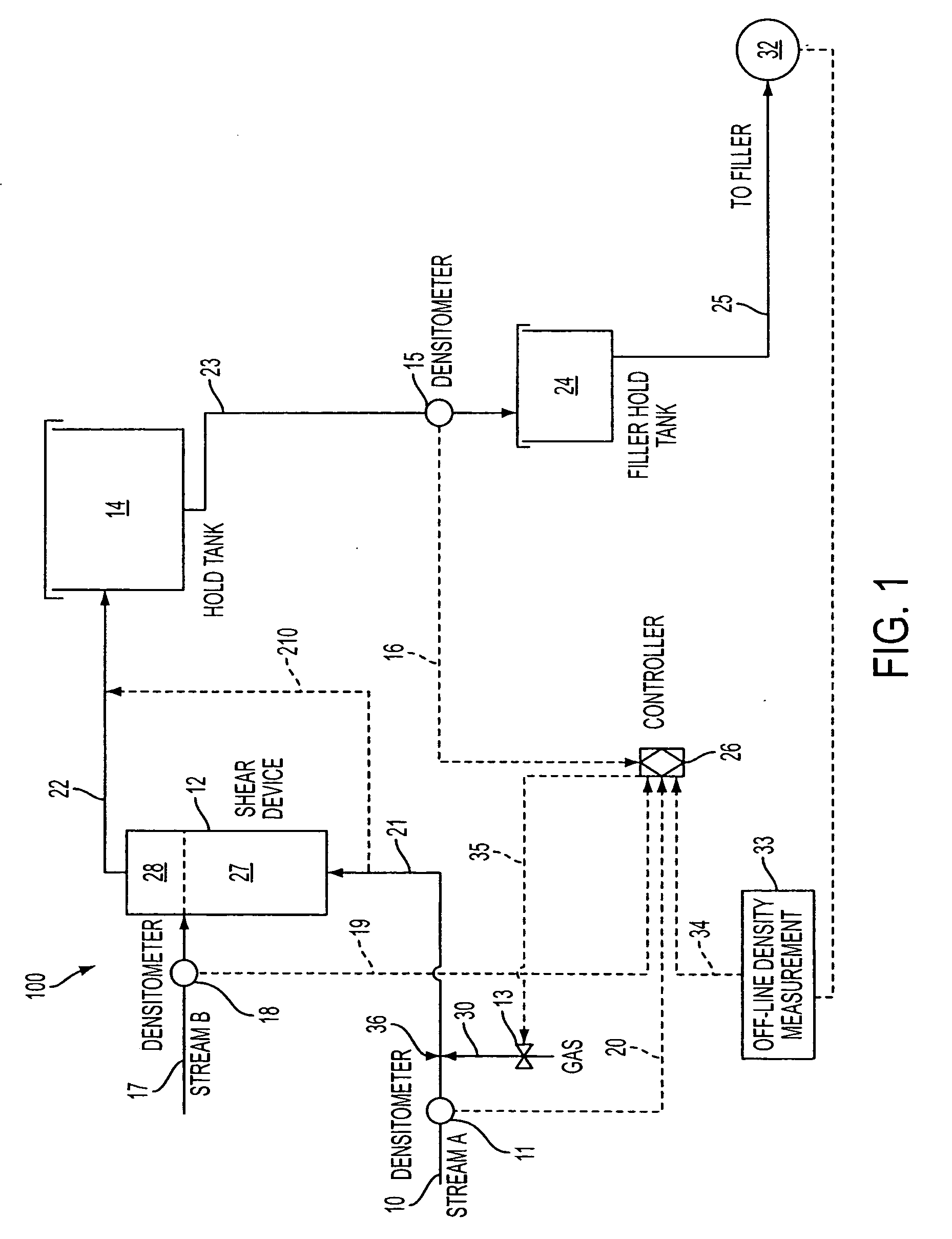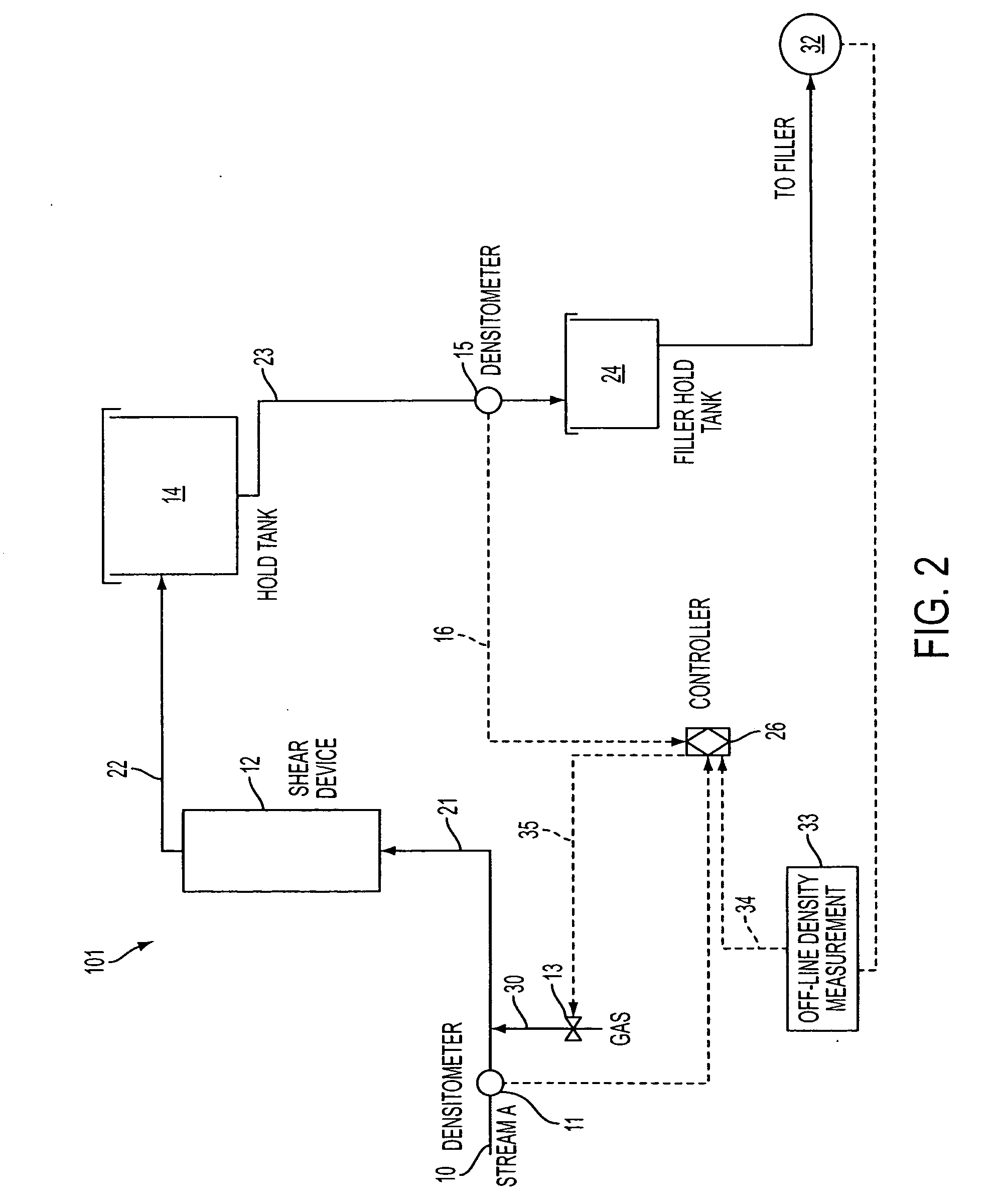Method and system for controlling product density
- Summary
- Abstract
- Description
- Claims
- Application Information
AI Technical Summary
Benefits of technology
Problems solved by technology
Method used
Image
Examples
example 1
[0071] As an initial control study, an aerated spoonable foodstuff was produced in a process system which was generally the same as that shown in FIG. 1, as described above, except that the densitometer used to measure product density was located in piping 22 at a location immediately adjoining the outlet of shearing unit 12. A two-stage shearing unit was used of the type as generally described in U.S. Pat. No. 5,114,732. A base emulsion premix was pumped into the shearing unit 12 at a pressure of about 40 to about 60 psig, and the emulsified product subsequently exited the unit 12 at an outlet pressure of about 20 psig. A pressurized gas was combined with the base emulsion premix before the resulting combination was pumped into the shearing unit. A control valve was installed on the gas inlet line to provide control over the gas feed flow rate.
[0072] The base emulsion premix was fed into the shearing unit at a rate of approximately 350-650 lbs. / minute. The base emulsion premix was...
example 2
[0075] In these experiments, the densitometer was situated further downstream of the shearing unit at a location similar to what is generally illustrated in FIG. 1. The densitometer was fitted on a conduit 23 connecting a 500 gallon hold tank 14, which was located downstream on the exit side of the shearing unit 12, and a smaller 50 gallon hold tank 24 at the input side of the filler 32. Piping 22 had a length of approximately 5 feet and diameter of about 4 inches, and the densitometer was located immediately preceding tank 24. Piping 23 had a similar diameter as piping 22. The product had an average dwell time of approximately 5-15 minutes in holding tank 14. The dwell time in filler tank 24 was approximately 1-5 minutes.
[0076] Otherwise, the process materials, equipment, and manner of recording the product density measurements were similar to that described in Example 1.
[0077] In a first process run, air was used as the gas. The results are plotted in FIG. 7. The product density...
example 3
[0080] Experiments were performed to investigate and compare the possible effects of the choice of aeration gas on the density retention of aerated emulsions. Nitrogen and air were studied in this respect. Also, the effects of the choice of aeration gas were studied in two different types of aerated emulsions: A) a mayonnaise, and B) a mayonnaise analog. The process system used to manufacture each type of aerated emulsion studied corresponds to that described in Example 2.
[0081] A) Study on Mayonnaise:
[0082] A mayonnaise premix comprising approximately 80% oil and 6% eggs with the remainder comprising water, sweeteners, and flavors. Gas (either nitrogen or air, depending on the run) was combined with the base emulsion premix at a rate of 10-15 SCFH. The product density was measured both at the outlet of the shearing unit as the “initial product density” (see Example 1), and separately at the downstream intermediate the first and second holding tanks as the “Pre-filler product dens...
PUM
 Login to View More
Login to View More Abstract
Description
Claims
Application Information
 Login to View More
Login to View More - R&D
- Intellectual Property
- Life Sciences
- Materials
- Tech Scout
- Unparalleled Data Quality
- Higher Quality Content
- 60% Fewer Hallucinations
Browse by: Latest US Patents, China's latest patents, Technical Efficacy Thesaurus, Application Domain, Technology Topic, Popular Technical Reports.
© 2025 PatSnap. All rights reserved.Legal|Privacy policy|Modern Slavery Act Transparency Statement|Sitemap|About US| Contact US: help@patsnap.com



